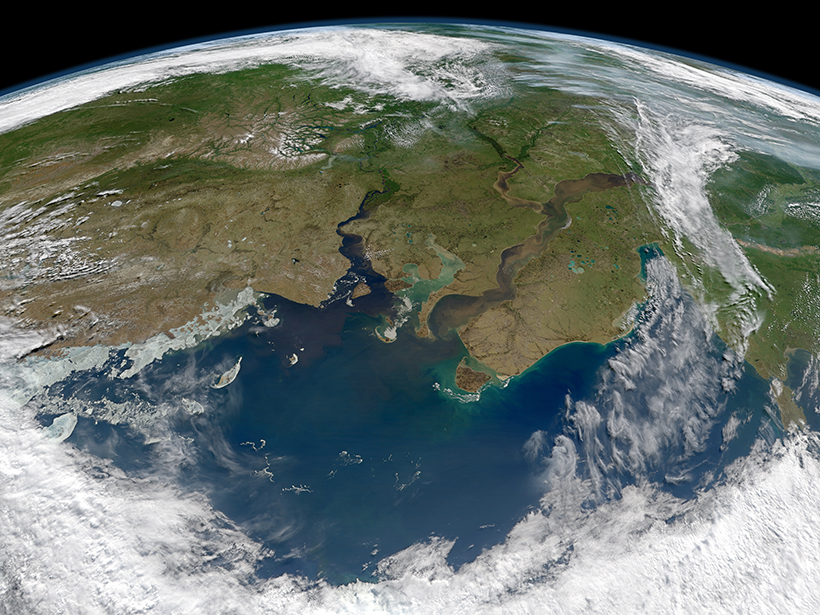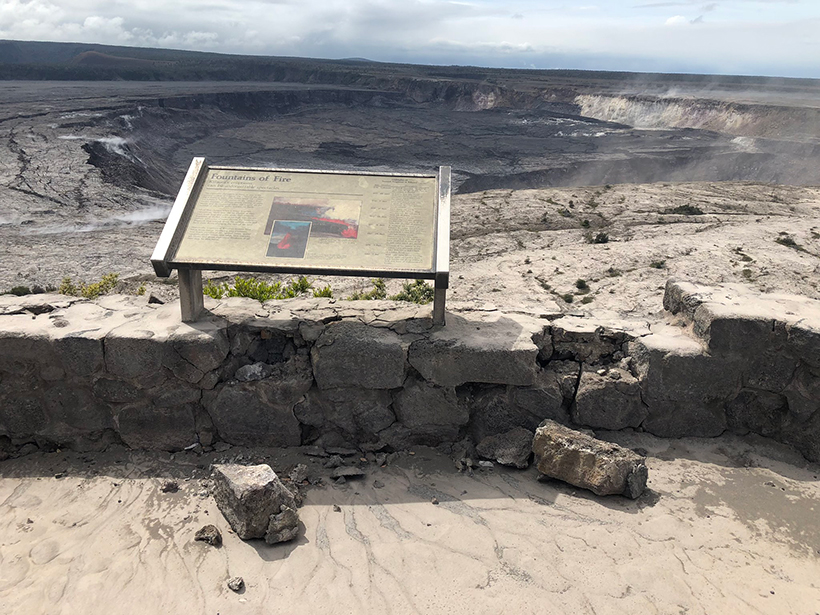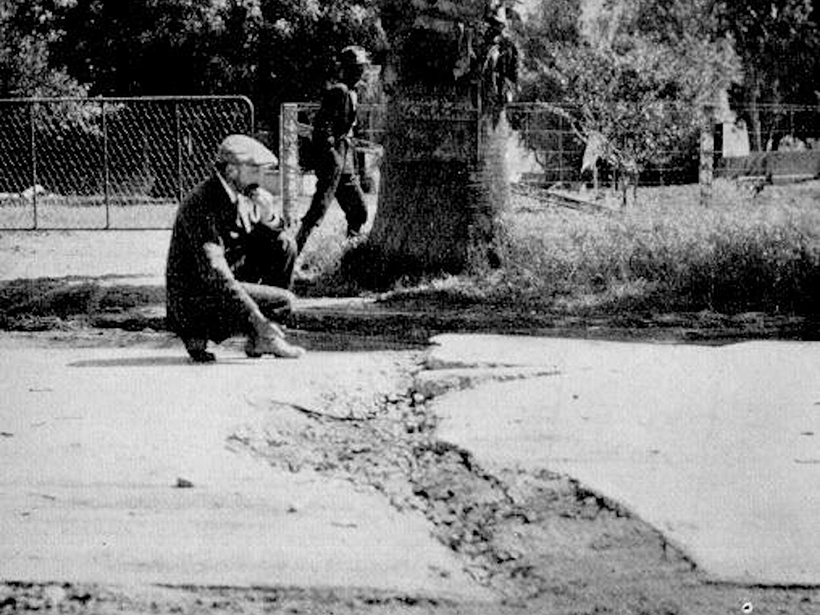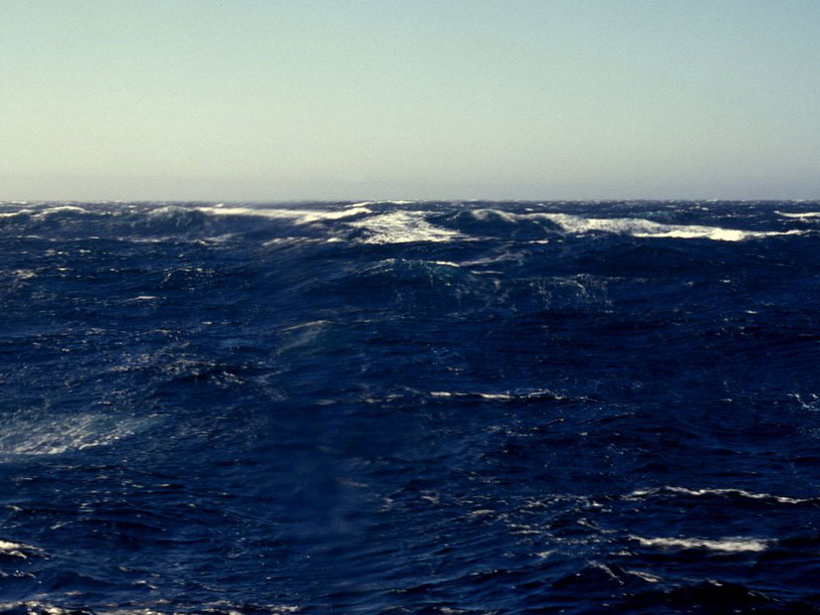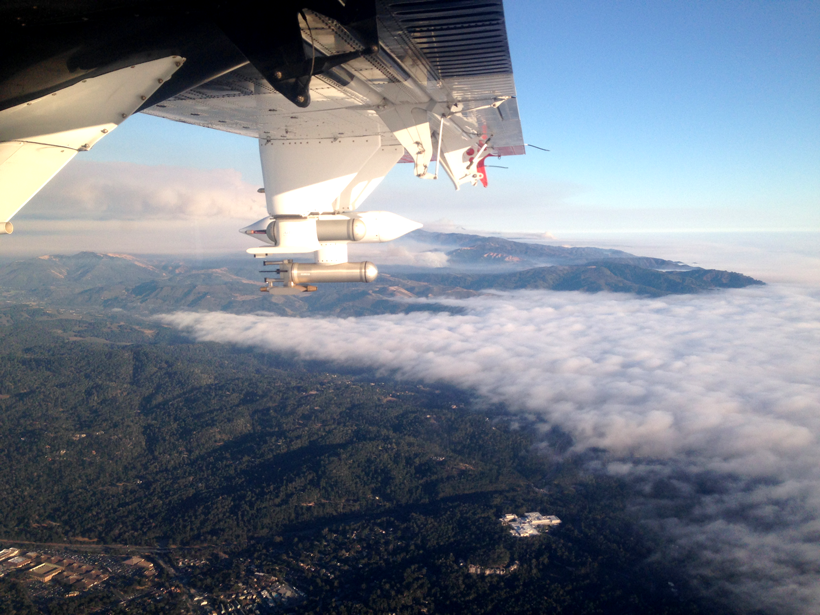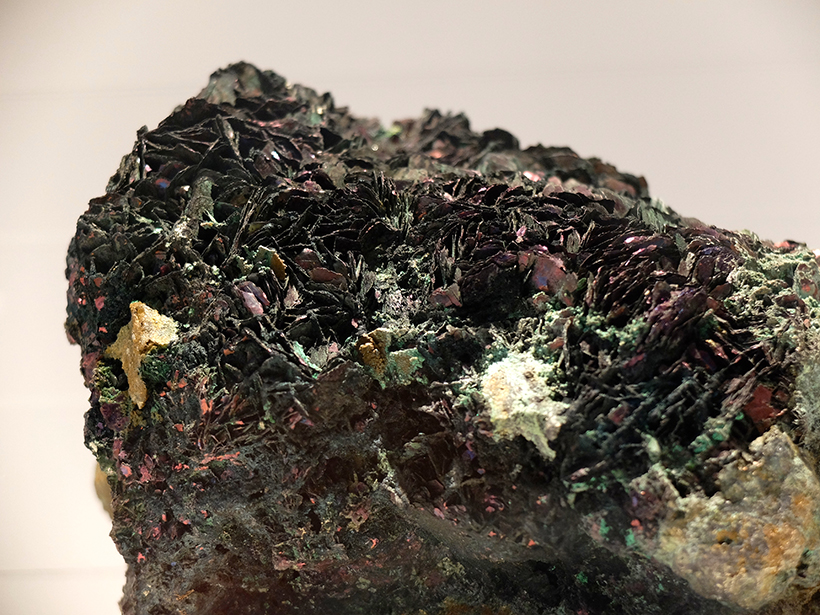Materials that trap solar heat at the sea surface could cause more extreme temperatures.
CC BY-NC-ND 2019
Hawaiian Volcano Observatory Searches for a New Home
Seismic activity during the eruption of Kīlauea damaged the Hawaiian Volcano Observatory beyond repair. Now officials are looking for a new site.
Reassessing California’s Overdue Earthquake Tab
Paleoseismic records show that the current 100-year hiatus since the last major event on the San Andreas, San Jacinto, and Hayward Faults is unprecedented in recent geologic history.
Take Weather Prediction with a Grain of Salt and It Gets Better
Sea surface salinity is starting to rival other methods for seasonal rain forecasting.
Very Warm Water Observed Along West Antarctic Ice Shelf
Two years of mooring observations at the edge of the continental shelf show that wind stress and upwelling control the inflow of some of the warmest water observed at an ice shelf front in Antarctica.
How Mars Lost Steam
Solar winds are not the main culprit in stripping the planet’s atmosphere, a new study suggests.
Probing Wildfire Smoke Plumes Up Close
Direct observations from flights over coastal California reveal more about aerosol plumes released by burning biomass.
Precipitation in the Tropics: A New View
The first study to simultaneously investigate precipitation and cloud structures in tropical weather systems concludes observation systems significantly overestimate the height of raining clouds.
King of the Tyrannosaurs Goes on Display
The biggest, oldest T. rex found to date shows how big tyrannosaurs could get.
For Some Copper Deposits, Microbes Make Minable Minerals
Copper ores were long thought to form through purely chemical processes, but a recent study provides the strongest evidence yet that microbial metabolism drives mineral production.

